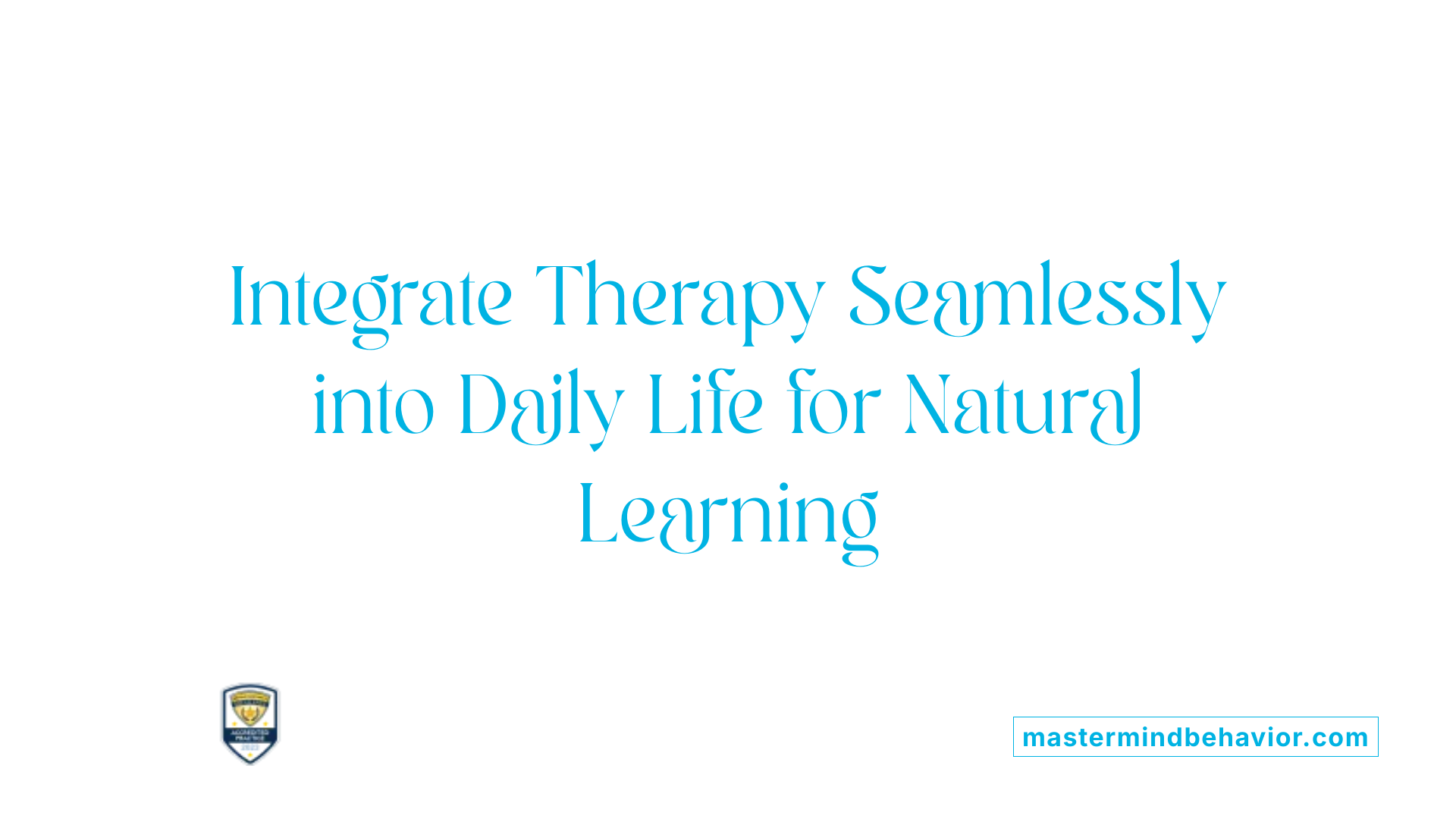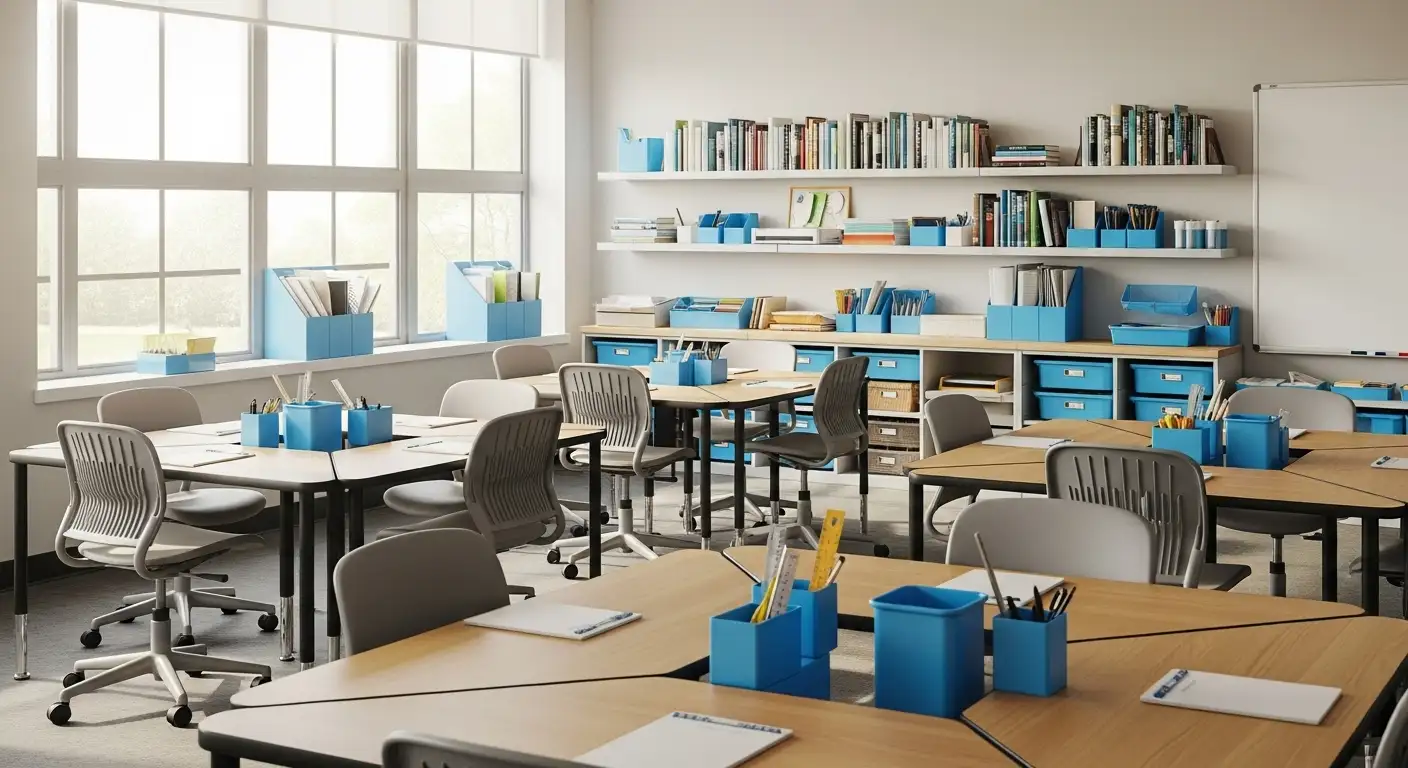How ABA Providers Can Help Teachable Moments Arise Throughout the Day

Harnessing the Power of Everyday Interactions for Skill Building
Applied Behavior Analysis (ABA) therapy is a scientifically backed approach renowned for helping children with autism develop essential life skills by enhancing independence and reducing challenging behaviors. By integrating ABA principles into daily routines and interactions, providers can transform ordinary moments into valuable learning opportunities. This article explores how ABA providers enable teachable moments throughout the day, fostering consistent growth in natural environments such as home, school, and community settings.
Understanding ABA Therapy’s Structured Approach to Teachable Moments

What foundational methods does ABA therapy use to create teachable moments?
ABA therapy is grounded in a structured and systematic approach that breaks down complex skills into step-by-step, manageable tasks. This method, known as task analysis, enables children with autism to learn daily routines, communication, and social interactions by mastering each small component individually.
Positive reinforcement plays a crucial role by rewarding desirable behaviors, which increases the likelihood of those behaviors being repeated. Therapists carefully collect data to monitor progress and adjust teaching strategies as needed, ensuring interventions remain effective and individualized.
Individualized plans tailor learning objectives to each child's unique strengths and challenges. This personalization promotes meaningful skill acquisition and facilitates the generalization of learned skills across different environments, such as home, school, and community settings.
The therapy's core principles include:
- Positive reinforcement to encourage behaviors
- Data-driven decision-making
- Skill generalization to various contexts
- Task breakdown for clarity and manageability
Together, these components create repeated teachable moments during daily routines, enabling consistent learning and growth for children with autism through precise, evidence-based methods.
Applying ABA Techniques to Daily Routines for Natural Learning

How can ABA providers integrate therapy into everyday routines to support learning?
ABA therapy is seamlessly integrated into daily routines to promote meaningful learning for children with autism. Providers break down tasks such as brushing teeth, household chores, and transitions into manageable, sequential steps. For example, brushing teeth is divided into specific actions, each taught individually with prompts, allowing the child to master one component before moving to the next.
Prompting plays a crucial role by guiding children through each step, while positive reinforcement encourages them to repeat and refine these skills, leading to mastery. Praise, rewards, or other forms of encouragement help maintain motivation and reinforce progress.
Transitions between activities or locations, often challenging for children with autism, are supported using visual schedules and timers. These tools prepare the child for upcoming changes, reducing anxiety and fostering smoother adjustments to new routines.
Examples of daily routines as natural learning opportunities
- Self-care routines: Teeth brushing, dressing, and handwashing are taught through task analysis, step-by-step prompts, and reinforcement.
- Household tasks: Activities like setting the table or tidying up are broken down into simple sequences, with effort reinforced through praise and repetition.
- Transitions: Use of visual schedules and practice routines helps children anticipate and adjust to changes such as moving from playtime to mealtime.
Role of reinforcement and repetition in mastery
Reinforcement techniques, including verbal praise and tangible rewards, strengthen the child’s desire to engage in and repeat learned behaviors. Consistent repetition solidifies these skills, enabling children to perform daily routines independently over time.
The combination of prompting, chaining steps, visual supports, and reinforcement ensures ABA therapy is integrated naturally into children's everyday lives, making learning both effective and enjoyable.
Incidental Teaching: Leveraging Natural Moments for Skill Development

What is incidental teaching and how do ABA providers use it to create teachable moments?
Incidental teaching is an evidence-based ABA strategy that uses natural, everyday situations to foster learning in children with autism. Unlike structured therapy sessions, incidental teaching takes advantage of spontaneous moments during routines like playtime or mealtime. This approach makes learning enjoyable and relevant, as children engage in activities motivated by their own interests.
ABA providers use incidental teaching by closely observing the child's interests and initiating learning opportunities based on these natural motivators. They employ prompts to support the child’s attempts, provide positive reinforcement to encourage repetition, and use conversation to deepen understanding. Every interaction is seen as a potential learning moment, which helps build essential skills in a natural context.
The five steps of incidental teaching
- Leveraging Interests: Therapists identify what naturally attracts the child’s attention to spark motivation for learning.
- Providing Support Through Prompts: Gentle guidance prompts the child to perform a targeted skill or response.
- Applying Positive Reinforcement: Successes are rewarded with praise or tangible rewards, encouraging continued effort.
- Engaging Through Conversations: Conversations during activities help develop communication and social skills.
- Recognizing Every Interaction as a Learning Opportunity: Caregivers and therapists stay alert to everyday moments that can be used for teaching.
Application in diverse settings
Incidental teaching is highly flexible and can be implemented seamlessly at home, in schools, or community environments. Its adaptability enhances generalization, helping children apply skills learned in one context to many others. For example, during a community outing, a therapist might encourage sharing by prompting child-initiated communication about a toy or snack, reinforcing social interaction naturally.
Focus on language, social interaction, and communication skills
This approach emphasizes foundational skills critical for a child’s development, particularly language acquisition, social interaction, and communication. By embedding instruction in natural settings, incidental teaching helps children improve vocabulary, sentence formation, turn-taking, and social engagement, all vital for independence and meaningful connections.
Through these naturalistic, child-focused techniques, incidental teaching enriches ABA therapy by making learning both effective and enjoyable for children with autism.
Enhancing Social Skills and Communication Through Supported Interaction

How do ABA providers support social and communication skill development in teachable moments?
ABA therapy uses practical strategies like role-play and turn-taking exercises to build social skills within natural, everyday contexts. These activities help children practice sharing, cooperating, and responding appropriately in social situations.
Role-play and turn-taking strategies
Role-play allows children to simulate social scenarios, making abstract social rules concrete and understandable. Turn-taking activities teach patience and awareness of others, essential components of social interaction.
ABA-based communication techniques including modeling and prompt fading
Communication is often broken down into manageable steps using modeling and prompting techniques. Therapists initially demonstrate a behavior or phrase, then gradually reduce prompts to encourage independent speech development. This approach supports vocabulary growth and the ability to form sentences.
Use of reinforcement to encourage positive social behavior
Positive reinforcement, such as praise or rewards, is used consistently to encourage desired social behaviors. Reinforcement increases motivation and helps solidify new skills.
Use of ABA in daycare and school to foster peer interaction
In educational settings, ABA techniques like structured prompts, visual supports, and reinforcement systems promote sharing, turn-taking, and cooperative play. These strategies help children engage more fully with peers, supporting social development across environments.
The Vital Role of Caregivers and Environment in Facilitating Learning

What role do caregivers and the environment play in creating teachable moments supported by ABA?
Caregivers play a crucial role in ABA therapy by establishing structured environments that foster learning and independence. Utilizing visual aids such as charts and schedules helps children anticipate daily activities and transitions, reducing anxiety and promoting smoother adjustments.
Consistency is essential; caregivers provide stable routines paired with positive reinforcement like praise or rewards, which encourages children to repeat desirable behaviors. Clear, straightforward instructions paired with immediate feedback help children understand expectations and recognize their own progress.
Collaboration between caregivers and ABA professionals is vital. Through parent coaching and regular communication, families learn to implement ABA strategies effectively, ensuring that therapeutic goals are supported not only during formal sessions but also throughout everyday interactions at home and other environments.
This collaborative approach promotes generalization of skills, making learning meaningful and sustainable across multiple settings. Informed caregivers become active partners in therapy, helping to identify teachable moments and foster ongoing development.
Integrating ABA Principles into Indoor Activities for Engaged Learning
How can indoor activities be used by ABA providers to foster teachable moments?
Indoor activities offer a unique opportunity to blend ABA techniques with engaging play and learning. Activities like building games, arts and crafts, cooking, board games, and physical play are excellent platforms. Therapists and parents use ABA strategies such as modeling desired behaviors, breaking tasks into smaller, manageable steps, prompting the child when needed, and allowing choices to promote independence and decision-making.
The familiar and comfortable indoor settings help reduce anxiety for children with autism, making them more receptive and engaged. This natural environment encourages learning without pressure, turning routine play into structured teaching moments.
To maximize learning, parents and therapists set clear expectations and provide immediate positive reinforcement when the child completes a step or shows effort. Breaking tasks into smaller parts supports the child in mastering each component before moving to the next. Modeling helps demonstrate the expected behavior clearly, increasing understanding. Offering choices empowers the child and fosters motivation.
Overall, combining ABA principles with indoor activities creates enjoyable, meaningful experiences that effectively enhance skill development and behavior improvement.
Tracking Progress and Adjusting Interventions Through Data Collection
Why is data collection essential in ABA therapy for creating effective teachable moments?
Data collection is foundational in Applied Behavior Analysis (ABA) therapy as it offers an objective way to monitor a child's progress. Through consistent recording of behaviors, therapists can identify patterns and assess the effectiveness of interventions.
Importance of data in ABA
By systematically gathering data, therapists ensure that decisions about teaching strategies are evidence-based. This minimizes trial-and-error approaches and provides a clear picture of what methods yield positive outcomes.
Behavior tracking and assessment using the ABC model
A commonly used technique is the ABC model, which analyzes:
- Antecedents: What happens right before a behavior
- Behaviors: The actions themselves
- Consequences: What follows a behavior This framework helps in pinpointing triggers and the outcomes reinforcing behaviors, allowing therapists to tailor interventions accordingly.
Informing individualized treatment and refining approaches
Data enables the creation of customized treatment plans by revealing which strategies work best for each child's unique needs. Therapists can then break down skills into teachable steps, efficiently use reinforcement, or alter prompts to enhance learning.
Ensuring continuous improvement with consistent monitoring
Regular data review supports ongoing adjustments, guaranteeing that interventions remain relevant as the child progresses. This continuous feedback loop fosters effective teachable moments and sustained development.
Ensuring Quality ABA Services Through Professional Standards and Collaboration
Licensed BCBA Supervision and Accreditation Standards
High-quality ABA programs are overseen by licensed Board Certified Behavior Analysts (BCBAs) who ensure that all interventions are scientifically sound and tailored to each child's needs. Providers follow accreditation standards that set benchmarks for effective, ethical, and safe therapy environments. These structures guarantee that programming is consistent, evidence-based, and continuously updated through data-driven decisions.
Training of Daycare Staff and Therapists in ABA Techniques
Daycare staff and ABA therapists receive specialized training to integrate behavioral strategies seamlessly into daily routines such as snack time and circle time. This training includes using visual aids, prompts, and reinforcement systems to support social engagement and skill acquisition. Ongoing professional development ensures staff are competent in using ABA methods within diverse settings.
Legal Compliance Including ADA Accommodations
ABA programs operate within legal frameworks like the Americans with Disabilities Act (ADA), which mandates reasonable accommodations and individualized assessments for children with autism. These guidelines ensure inclusiveness and safety, while protecting children's rights during therapy sessions. Safety protocols are also implemented to provide structured and secure learning environments.
Family Partnerships and Consistency Across Settings
Successful ABA interventions rely heavily on collaboration with families. Parent coaching and regular communication empower caregivers to reinforce skills at home, maintaining consistency that strengthens learning and behavior changes. This partnership creates a cohesive support network that extends ABA’s effectiveness beyond clinical or daycare settings.
How do ABA providers ensure effective and compliant programming that supports teachable moments?
ABA providers maintain quality through licensed BCBA supervision, adherence to accreditation standards, and ongoing staff training in ABA methods. Legal compliance with the ADA ensures inclusion and safety. Collaboration with families through coaching and communication reinforces skills consistently across environments, optimizing the effectiveness of teachable moments throughout the day.
Transforming Everyday Life Into Learning Opportunities
ABA providers serve as catalysts in turning daily interactions into meaningful teachable moments, facilitating continuous skill development for children with autism. By applying structured principles, individualized strategies, and evidence-based methods across various settings, they enable children to learn in natural, enjoyable contexts. The partnership between providers, caregivers, and educators ensures consistency and generalization of skills, ultimately fostering greater independence and improved quality of life for each child. Through intentional support and flexible approaches, ABA therapy truly brings learning to life throughout the day.
References
Recent articles

How ABA Therapy Encourages Flexible Use Of Coping Strategies
Unlocking Adaptive Skills: The Role of ABA in Teaching Coping Strategies

Key Considerations When Choosing an ABA Provider in Georgia
Navigating ABA Therapy Options: What Georgia Families Need to Know

Teaching Memory Strategies Using ABA Therapy
Harnessing ABA Therapy to Enhance Memory Skills in Autism

Using ABA Therapy To Develop Early Literacy Skills
Harnessing Behavioral Science for Early Literacy Growth in Autism

The Role Of ABA Therapy In Encouraging Healthy Social Identity
Building Bridges: ABA Therapy’s Influence on Social Identity Development in Autism

What Parents Should Know About Behavior Technician (BT) And RBT Supervision
Ensuring Quality and Safety in ABA Therapy: The Essential Role of Supervision for BTs and RBTs



